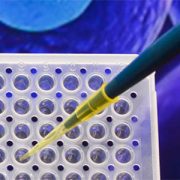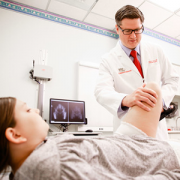Connection between abnormal placenta and impaired growth of fetuses discovered

A team of researchers used 3-D volumetric magnetic resonance imaging (MRI) in an innovative study that reported that when the placenta fails to grow adequately in a fetus with congenital heart disease (CHD), it contributes to impaired fetal growth and premature birth. Fetal CHD involves an abnormality of the heart and is associated with increased risk for neurodevelopmental morbidity.Until now, CHD in the fetus and its relationship to placental function has been unknown. But the advanced fetal imaging study has shown for the first time that abnormal growth in the fetus with CHD relates to impaired placental growth over the third trimester of pregnancy. Catherine Limperopoulos, PhD, Director of Children’s National Developing Brain Research Laboratory in the Division of Diagnostic Imaging and Radiology, is the senior author of the study published in the September 2015 issue of the journal Placenta, “3-D Volumetric MRI Evaluation of the Placenta in Fetuses With Complex Heart Disease.”
Specifically, the decreased 3-D volumetric MRI measurements of pregnant women reported in this study suggest placental insufficiency related to CHD. The placenta nourishes and maintains the fetus, through the delivery of food and oxygen. Its volume and weight can determine fetal growth and birth weight.
Abnormality in placental development may contribute to significant morbidity in this high risk-population. This study shows impaired placental growth in CHD fetuses is associated with the length of the pregnancy and weight at birth. Nearly 1 in every 100 babies is born in the United States with a congenital heart defect.
Developing the capacity to examine the placenta non-invasively using advanced MRI is needed to identify early markers of impaired placental structure and function in the high-risk pregnancy. This is a critical first step towards developing strategies for improved fetal monitoring and management, Dr. Limperopoulos says.
“We are trying to develop the earliest and most reliable indicators of placental health and disease in high-risk pregnancies. Our goal is to bring these early biomarkers into clinical practice and improve our ability to identify placental dysfunction,” Dr. Limperopoulos says. “If we can develop the capacity to reliably identify when things begin to veer off course, we then have a window of opportunity to develop therapies to restore function.”
The study used in-vivo 3-D MRI studies and explored placental development and its relationship to neonatal outcomes by comparing placental volumetric growth in healthy pregnancies and pregnancies complicated by CHD.
While mortality rates continue to decrease steadily in newborns diagnosed with complex CHD, long-term neurodevelopmental impairments are recognized with increasing frequency in surviving infants, Dr. Limperopoulos says.
“Our goal is to better support the developing fetus with CHD. We can best accomplish this if we develop technology that can allow us to safely and effectively monitor the fetal-placental unit as a whole throughout pregnancy,” Dr. Limperopoulos says.
“This is the new frontier, not only to ensure survival but to safeguard the fetus and to ensure the best possible quality of life,” she says.











